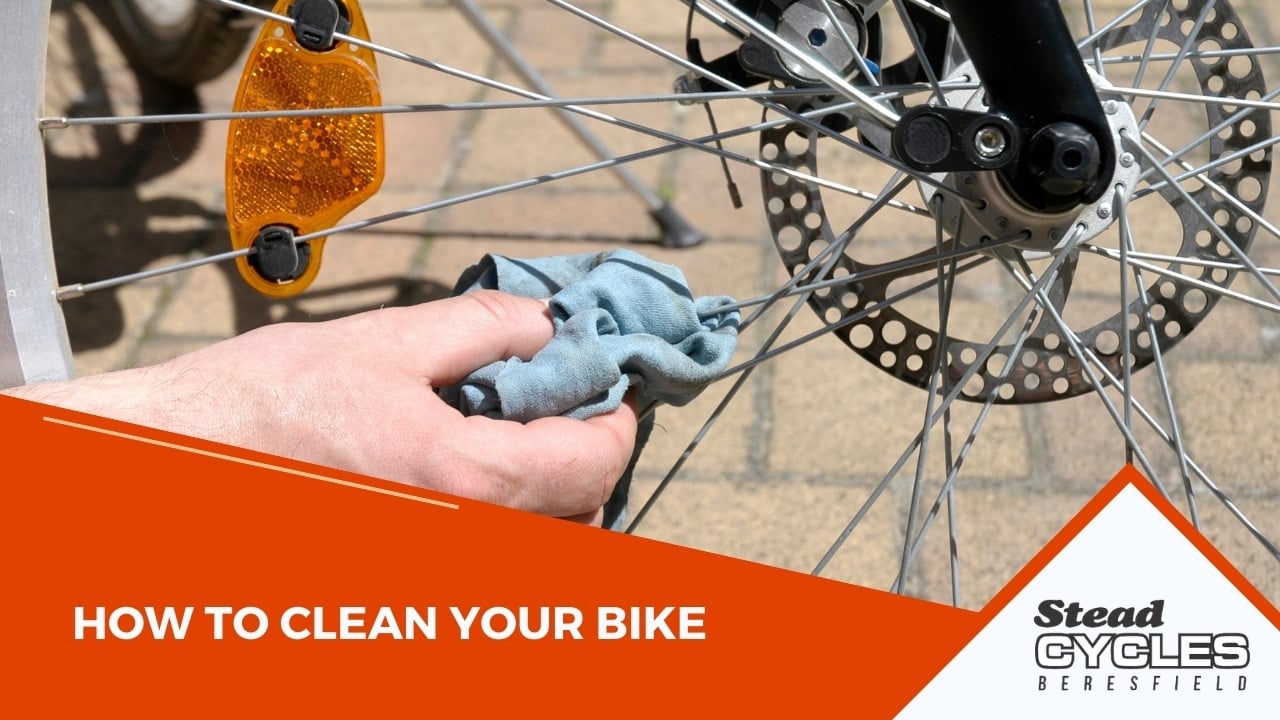Why Should You Have a Bike Maintenance Checklist?

How to maintain a bike, what you need for bike maintenance and why a maintenance checklist will keep your bike in great condition!
Riding a bike is a great way to get around and stay in shape. But just like your home and cars, bikes need regular maintenance too. You don’t have to be an expert mechanic – all you need is a checklist and the right tools to keep your bike in good condition.

Basic Tools for Bike Maintenance
Before you start working on your bike, make sure you have the proper tools in your garage. These items are readily available in your local hardware store or bike shop:
- Bike stand – You cannot work on your bike if it is wobbling on the ground. Therefore, a bike stand is a must when turning the pedals or checking the wheels.
- Cleaning brushes – Your tool kit should have a set of different brush sizes – including an old toothbrush – for cleaning big bike parts as well as hard-to-reach areas.
- Cleaning rags – Bike maintenance can be messy – expect to have grease, oil, and wax on your hands when cleaning your bike.
- Chain cleaner – Choose a brand that’s specifically made for bikes and contains nontoxic solvents.
- Lubricant – This is critical in maintaining your bike’s drive train. You may choose a dry or wet lubricant, as long as it’s specially formulated for bicycles. Wet lubricants are great for rainy weather as they won’t rinse off immediately.
- Portable bike pump – This handy device is essential for checking and maintaining tyre performance.
- Soap – If you need to remove grime and mud, plain water might not be enough. You can try removing tough dirt with dishwashing soap.
- Torque wrench – Your toolbox must have a torque wrench with different socket sizes for tightening nuts and bolts on your bike.

How to Clean Your Bike
If you are simply riding around the city, clean your bike with a damp rag before and after use.
If you encounter mud, you can hose the bike with water. However, be careful not to wet components that involve electronic parts or may be susceptible to rust.
If you are taking your bike up the mountain or cross country, you might need to brush or scrub the handlebar stem, frame, and tyres.
Don’t forget to lubricate the chain every time you ride your bike.

Bike Maintenance
It is essential to give your bike a quick safety check before you head out. Busted lights or under-inflated tyres can significantly increase the risk of an accident. By performing routine maintenance, you can ensure that your bike is roadworthy.
There are maintenance checks that you must do every time you go for a ride, while others can be done weekly, monthly, or even annually.

Quick Bike Safety Checklist
This list should be checked before going out for a ride each time:
- Tyre pressure and tread
- Fluid levels in engine, coolant and brakes
- Lights, indicators and horn
- Brakes
- Chain
- Suspension
In addition to checking the items above, give the wheels a spin to see if they are wobbling. If a wheel is misaligned, get them re-trued as soon as possible.
Always carry a tyre kit with you in case you encounter a flat.

Daily Bike Maintenance
Lubricant
All the moving parts of a bicycle require lubricant. A good dose of lube keeps metal components stable, working, and free from rust. Apply a generous coating on the chain, pedals, and other visible moving parts. The one component that you have to keep lubricants away from is your brakes – these should be dry at all times.
Brakes
These are the most crucial safety features of your bike. Whether you’re weaving through city traffic or speeding down a hill, brakes are the only thing that protects you from an accident. Inspect your brakes carefully and take your bike to a mechanic right away if you see anything suspicious.
Tyres
These are just as important as your brakes. Check your tyres for tread and air pressure. Look for cuts, glass shards, or embedded stones. If you see signs of wear and tear, consider replacing your tyres with a new set. Before you head out, always check your tyres with a pressure gauge and inflate as necessary. The recommended pressure is 90-100 psi.

Weekly Bike Maintenance
Brakes
Check for wear and tear on the brake blocks and cables. Do they function properly when you squeeze the brake levers? Are the cables intact, rusting, and fraying? Is the brake handle too loose or too tight? Make the necessary adjustments after inspection.
Chain
Make sure the chain moves freely and does not make squeaking noises. Lubricants are the best way to keep your chain in tip-top shape. However, do not lubricate your bike if it is dirty!
If there is minimal dirt on the chain, simply apply a degreaser and clean with a rag. If there is dirt build-up, clean the chain with an old toothbrush dipped in solvent. Always allow the degreaser to completely dry off before lubricating the chain.
Eventually, you will have to replace your bike chain due to wear and tear. You can do a manual check or purchase a chain checker tool to assess the condition of your chain. If you are not sure what to do, you may contact our bike mechanics at Stead Cycles.
Lights
Riding at night can be dangerous if your lights and reflectors are not working. Check if the lights are sufficiently bright, wipe off the dust from reflectors, and replace batteries if necessary.

Monthly Bike Maintenance
Pedals
Check your bike pedals and make sure they rotate freely. Oil them if necessary. Replace rubber blocks if you see signs of wear and tear.
Wheels
The wheels and rims of your bike have to be aligned. If they are not, you could true them yourself or take them to a bike mechanic for truing.
Chain
Clean the cassette cogs of your bike chain once a month and reapply lubricant.
Chain tension
If your bike has no gears, increase chain tension by loosening nuts and pulling the hub and wheel back. If your bike has derailleurs, check to see if the tensioning spring is working.
Brakes
If your ride feels gritty or your brakes make a screeching sound, it could be time to replace your brake pads.
Gears
Wipe dirt off the front gears and check the alignment of your back gears. Oil the pivot joints and all moving parts.
Wheel cones
Check if your wheels are shaking sideways. They should rotate cleanly for at least 30 seconds when you spin them.
Frame
Do a visual inspection of your bike frame, looking for possible damage and clean with soap and water.
Fork tips
If you notice cracks on the front or back fork tip, do not ride your bike until you have determined if it’s a simple crack on the paint job or the fork itself.
Screws and bolts
These tiny pieces tend to get loose over time. Tighten screws and bolts with a wrench as needed.

Yearly Bike Maintenance
Bike shocks
Most road bikes are not built with a suspension system, but shocks are crucial for mountain bikes. Shocks absorb impact when you’re riding through rough terrain, increasing rider control and decreasing rider fatigue.
If your shocks are defective, it puts more pressure on the other components of your bike. At least once a year, check your shocks for resistance and leaking fluid.

Have Your Bike Serviced Regularly by Your Friends at Stead Cycles
While this checklist covers most DIY maintenance requirements, it is still important to have a professional take a look at your bike once or twice a year. Here at Stead Cycles, we have expert mechanics that are ready to give your bike some much-needed TLC –call or email us today!
